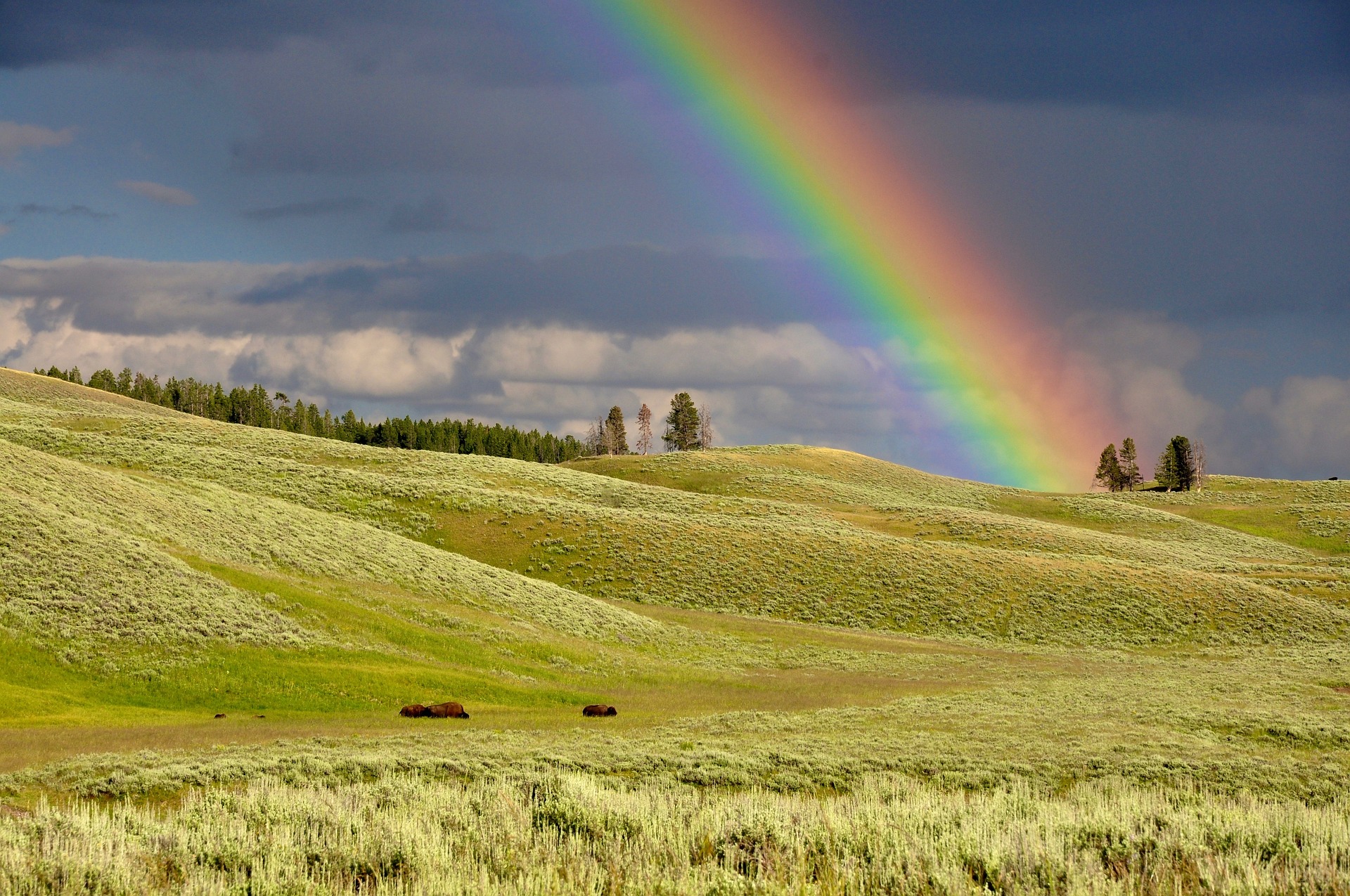7 Mesmerizing Types of Rainbows That Will Leave You Spellbound with Nature’s Wonders

Rainbows are a true gift of nature that never cease to amaze us with their colorful spectacle. The phenomenon of rainbows is caused by the refraction, reflection, and dispersion of light in water droplets, creating a stunning display of colors that can lift our spirits and fill us with wonder. While we may be familiar with the classic rainbow, there are actually several different types of rainbows that occur in different conditions, each with its unique beauty and charm.
In this article, we will explore the 7 types of rainbows that remind us of nature’s awesomeness and inspire us to appreciate the world around us.
Classic Rainbow
“The Timeless Beauty of Red, Orange, Yellow, Green, Blue, Indigo, and Violet!”
One of the most well-known and beloved types of rainbows is the classic rainbow, which displays the full spectrum of colors: red, orange, yellow, green, blue, indigo, and violet. This rainbow is formed by the reflection, refraction, and dispersion of sunlight in raindrops, creating a semicircular arc of colors that can be seen in the sky opposite the sun. The colors of the rainbow are arranged in a specific order, with red being the outermost color and violet the innermost.
What makes the classic rainbow so special is not only its vibrant colors but also its timeless beauty. It has inspired countless works of art, literature, and music throughout history, and continues to be a source of wonder and awe for people of all ages. Whether we see it in the sky after a storm, or in a painting or photograph, the classic rainbow never fails to evoke a sense of joy and appreciation for the natural world.
Double Rainbow: A Rare and Delightful Sight
While the classic rainbow is a common and well-known sight, the double rainbow is a much rarer and more remarkable phenomenon. As its name suggests, a double rainbow consists of two separate arcs of colors, with the outer arc being brighter and displaying the same colors as the classic rainbow, and the inner arc being fainter and displaying the colors in reverse order.
The double rainbow is formed when light is reflected twice within a raindrop, creating the two separate arcs of colors. It is a rare and delightful sight, often eliciting gasps of amazement and wonder from those lucky enough to witness it. In some cultures, the double rainbow is considered a symbol of good luck or a sign of a particularly auspicious moment.
Supernumerary Rainbow: A Unique and Intriguing Phenomenon
The supernumerary rainbow is a type of rainbow that is less well-known but no less fascinating. It is characterized by the appearance of several additional, fainter bands of colors that appear within the main arc of the rainbow. These additional bands are caused by interference between light waves within the raindrops, and can sometimes be seen as a series of closely spaced bands that overlap and blend together.
The supernumerary rainbow is a unique and intriguing phenomenon, often described as a “pastel rainbow” due to the softness and subtlety of its colors. It is most commonly seen alongside the classic rainbow, and is often mistaken for a reflection or an artifact of the eye’s perception. However, with careful observation and a bit of luck, the supernumerary rainbow can be appreciated in its full beauty and wonder.
Moonbow: A Nighttime Spectacle
Most rainbows are seen during the day, when the sun is shining and rain is falling. However, there is a type of rainbow that can only be seen at night: the moonbow. As its name suggests, the moonbow is formed by the light of the moon rather than the sun, and is therefore much fainter and more subtle than its daytime counterpart.
The moonbow is created by the same process as the classic rainbow, with moonlight refracting and reflecting off raindrops to create a semicircular arc of colors. However, due to the lower intensity of moonlight, the colors are much fainter and often appear as shades of gray or white rather than vibrant hues. Moonbows are a rare and elusive sight, requiring specific conditions of clear skies and bright moonlight, but are a magical and unforgettable experience for those who are lucky enough to see them.
Fogbow: A Subtle and Mysterious Rainbow
Fogbows are a type of rainbow that are formed in foggy or misty conditions, rather than in rain. They are also known as “white rainbows” or “ghost rainbows,” due to their pale, subtle appearance.
Fogbows are created in much the same way as other rainbows, with light being refracted and reflected within tiny water droplets in the air. However, the droplets in fog are much smaller than raindrops, which results in a much fainter and more diffuse rainbow.
Despite their subtle appearance, fogbows are a fascinating and mysterious phenomenon. They are often accompanied by a phenomenon known as “Brocken spectres,” in which the observer’s shadow is cast onto the fog, creating a halo around the shadow that appears to loom larger than life.
Fogbows can also sometimes appear to have a red outer edge, due to the scattering of light by the fog droplets. While they may not be as vibrant as classic rainbows, fogbows are a subtle and beautiful reminder of the magic and wonder of the natural world.
Reflection Rainbow: A Stunning Mirror Image
Reflection rainbows, also known as “reflected rainbows” or “water droplet rainbows,” are a type of rainbow that is formed not in the sky, but on a reflective surface such as a body of water or a glass window. Reflection rainbows are created when sunlight is refracted, reflected, and dispersed by water droplets on the surface, creating a stunning mirror image of the classic rainbow.
What makes reflection rainbows so unique is their symmetry and precision. Unlike sky rainbows, which are often distorted by atmospheric conditions and irregular droplet sizes, reflection rainbows are a perfect mirror image of the classic rainbow. They can be seen in a variety of settings, from a rain puddle on the street to a mountain lake, and are a testament to the power and beauty of light and water.
Twinned Rainbow: A Double Delight
Twinned rainbows, also known as “secondary rainbows,” are a type of rainbow that is formed when light is reflected twice within a raindrop, creating two separate and overlapping arcs of colors. The outer arc is the same as the classic rainbow, while the inner arc is reversed in color order and is much fainter.
What makes twinned rainbows so special is their rarity and their unique beauty. They are often only visible for a short period of time after a rainstorm when the sun is low on the horizon and the right atmospheric conditions are present.
Twinned rainbows are a double delight, offering twice the colors and twice the wonder of a classic rainbow. They are a reminder of the power and majesty of nature, and a testament to the beauty that can be found in even the most fleeting moments.
In conclusion, rainbows are not just a beautiful sight, but also a reminder of the awe-inspiring power of nature. Each type of rainbow has its unique charm and beauty, making it worth seeking out and experiencing firsthand. So, next time you spot a rainbow, take a moment to appreciate its magic and wonder.





